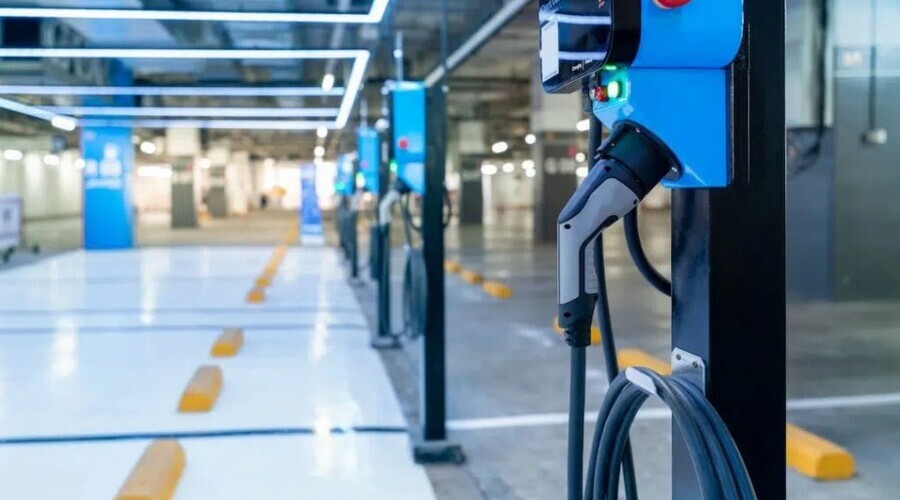While EV sales surged by 183% in 2024, reaching 4,500 units (6.2% of total car sales), charging station installations have not kept pace. Additionally, fewer than one in ten Chilean households own a charger for their low- or zero-emission vehicle.
Industry experts confirm to Mobility Portal Latinoamérica that the number of homes with a charging installation is below 1%, citing high initial investment costs and lack of regulatory support as key factors. Several official sources confirm this data.
Growth in EV Sales but a Lag in Charging Infrastructure
In 2024, EV sales in Chile grew by 183% compared to the previous year, with a total of 4,500 units sold, representing 6.2% of total car sales.
This growth has been driven by a wider range of available models and lower prices, making the technology more accessible to Chileans.
As of May 2020, 75% of Chile’s charging infrastructure was private, with the remainder consisting of public chargers, mostly located in homes or workplaces.
However, the public charging network is unevenly distributed. According to data from the Superintendency of Electricity and Fuels (SEC), by the first quarter of 2024, Chile had 920 public charging stations, but over 75% were concentrated in the Metropolitan Region. This leaves many areas with insufficient infrastructure to meet EV users’ needs.
The Challenge Begins at Home
The situation is even more critical in the residential sector. The lack of specific regulations that require or incentivise the installation of home charging points makes adopting this technology difficult.
Currently, Chilean regulations do not explicitly require real estate developers or electricity distributors to facilitate home EV charging, creating uncertainty regarding responsibilities, costs, and installation timelines.
According to Andrés Pizarro, Commercial Manager at Enérgica City, “The real estate sector faces both an opportunity and a challenge in this regard. Looking ahead, the most attractive buildings will be those equipped with EV chargers, especially considering that the National Electromobility Strategy states that in just 10 years, 100% of light and medium-duty vehicles sold in Chile must be zero-emission.”
For home installations, Pizarro explained to Mobility Portal Latinoamérica that “the electricity distributor’s responsibility ends at the front of your house. Beyond that, the company has no say in private home installations.”

“If you want to install a home charger, you must arrange for a certified installer to visit. If your home lacks sufficient power capacity, you’ll need to take additional steps—either adjust your power load, request an additional connection, or install a power control system,” he adds.
Pizarro believes that for single-family homes, the challenge is not as significant, since most Chilean households have a standard 10 kW power supply from the national grid.
Current Chilean regulations allow EV owners to request a second connection solely for charging electric vehicles. “This means you could separate your home’s electricity consumption from your EV charger’s power needs. However, this would involve additional costs for administrative procedures,” Pizarro explains.
High Costs and Outdated Electrical Systems
Several factors discourage homeowners from installing charging points:
• High installation costs (which can reach $3,000 per charger)
• Higher electricity tariffs due to increased consumption
• Lengthy approval and installation processes
Another challenge is old electrical systems in houses over 25 years old, which typically only have a 5.5 kW capacity. “In these cases, you have two options: either manage with the existing 5.5 kW or request a power upgrade, which involves additional costs and administrative steps that might discourage EV adoption,” says Pizarro.
Apartment buildings, despite having parking spaces, also face major obstacles when installing EV chargers. “An EV owner in an apartment building is at the mercy of high costs and their neighbours’ approval. In theory, no one can deny access to an electrical connection, but in practice, it’s complicated.”
The Growing Demand for Private Charging Points
In summary, EV owners in apartment buildings have three options:
1. Request the installation from the building management (which cannot legally refuse but involves high costs).
2. Use electricity from their apartment (this poses challenges for those living on higher floors).
3. Connect to the building’s common power supply (e.g., the system powering elevators, pools, and lighting).

“The first option cannot be denied, but it is costly. Just for materials, costs could rise by an additional $2,000,” says Pizarro.
In comparison, the European Union requires all new or renovated buildings with more than 10 parking spaces to pre-install electric ducting to simplify future charger installations.
Meanwhile, in New York, financial incentives cover up to 50% of the installation costs for residential charging infrastructure.
Chile still has a long way to go in aligning its regulations and infrastructure with the growing adoption of electric vehicles, particularly in residential charging solutions.






